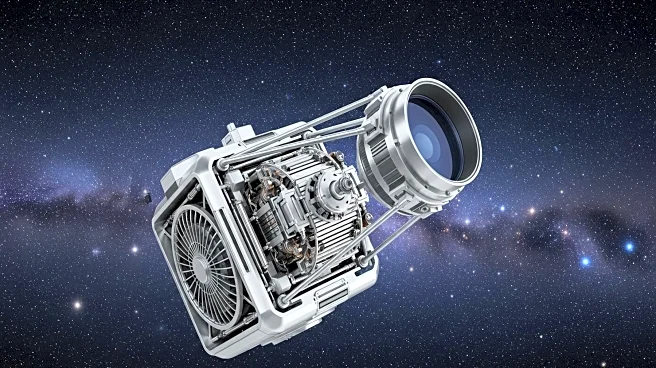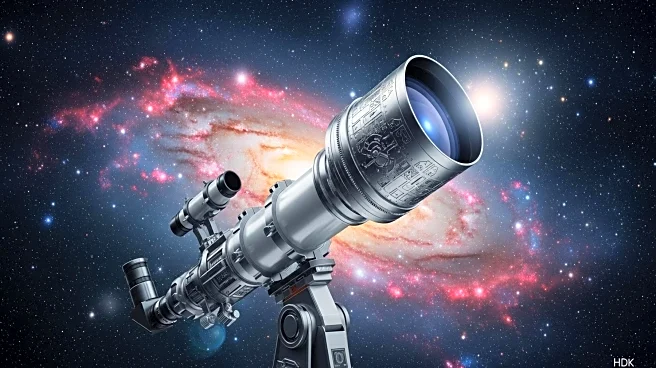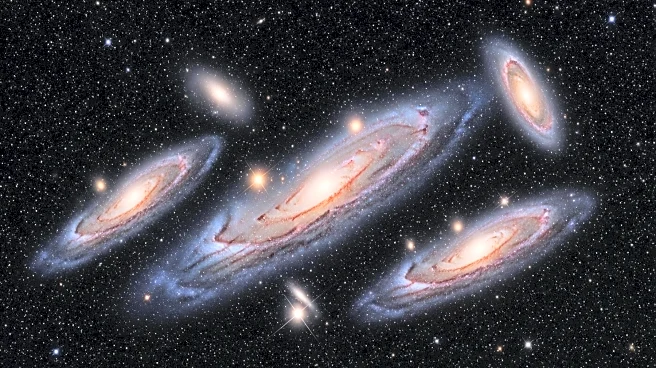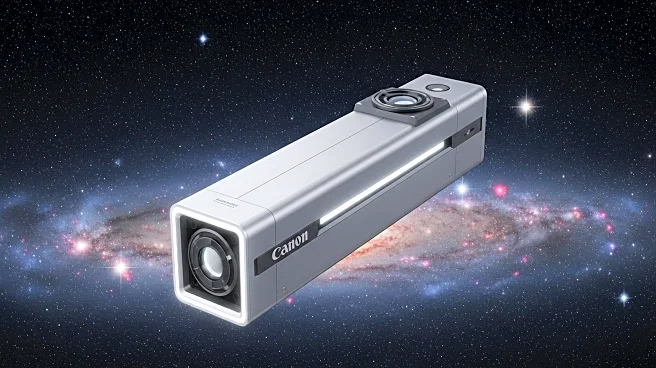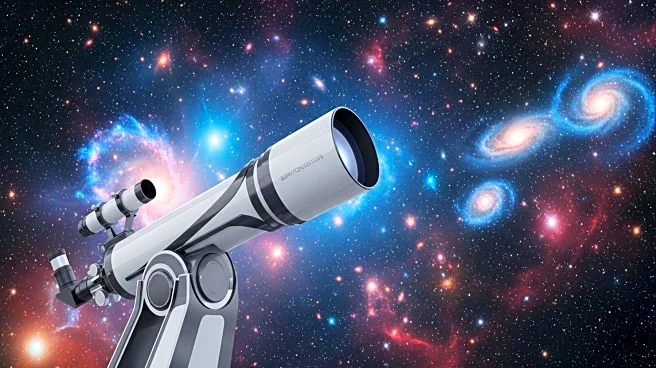What's Happening?
The James Webb Space Telescope (Webb) employs a unique design to stay cold enough to capture infrared light from cosmic objects. Webb's sunshield, made of five layers of Kapton, protects the telescope from heat and light from the Sun, Moon, and Earth. The telescope orbits at the Second Sun-Earth Lagrange Point (L2), ensuring it remains in a frigid environment with the Sun, Earth, and Moon on the same side behind its sunshield. Webb's open design allows heat to dissipate into space, preventing unwanted infrared radiation from affecting its sensitive instruments.
Why It's Important?
Webb's ability to maintain low temperatures is crucial for its infrared detectors to function properly, enabling it to observe distant cosmic phenomena. The telescope's design allows it to operate without relying heavily on coolant, extending its operational life. Webb's observations are expected to provide unprecedented insights into the universe, including the formation of stars and galaxies, and the potential for life on other planets.
Beyond the Headlines
The innovative design of Webb highlights the challenges and solutions in building space telescopes capable of observing infrared light. The use of materials like Kapton and the strategic positioning at L2 demonstrate the engineering feats required to overcome the thermal challenges in space. Webb's success could influence future telescope designs, emphasizing the importance of thermal management in space exploration.
